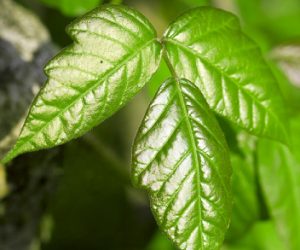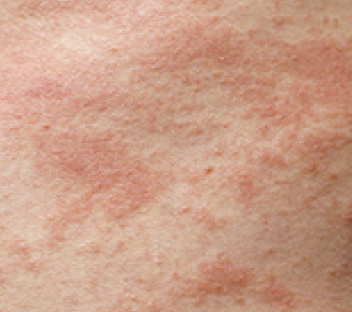
Poison Ivy
Poison Ivy Symptoms, Treatment and Prevention
The intensely itchy rash that typically follows an encounter with poison ivy is caused by an allergic reaction to an oil called urushiol (yoo-ROO-shee-all) contained in the plant’s leaves, stem and roots. For the 85% of humans who are allergic to the oil, exposure to just 50 micrograms of urushiol – about the size of a grain of table salt – will result in a moderate-to-severe rash.
Symptoms
Symptoms typically appear 24 to 72 hours after exposure to urushiol and include:
- A red, streaky rash
- Patches or streaks of red bumps, which may form blisters that leak fluid and then crust over
- Skin inflammation, a burning sensation, and swelling
The rash may last for two to three weeks, and is typically at its peak during days 4 to 7.
Get medical help if:
- You experience difficulty in breathing
- The rash shows signs of infection
- The rash covers most of your body
- You experience swelling, especially around the eyes or in the throat
- The rash develops on your face or genitals
- You have had severe reactions to urushiol in the past
Treatment
The U.S. Centers for Disease Control and Prevention (CDC) advises people who have been exposed to poison ivy/urushiol to rinse their skin thoroughly with Isopropyl (rubbing) alcohol or a grease-cutting soap (such as dishwashing liquid or liquid laundry detergent), and lots of water. The idea is to remove the oil from skin as quickly as possible.
Domeboro® Soothing Soak is your go-to poison ivy treatment product that will soothe the uncomfortable symptoms of urushiol, calming the urge to scratch which may result in additional complications such as infection. This treatment for poison ivy has been doctor-recommended for five decades, so you can depend on Domeboro® to comfort your irritated skin.
Domeboro® can be used with a compress/wet dressing or as a soak. Mix 1, 2, or 3 packets in 16 ounces of cool or warm water.
- Compress or wet dressing: Immerse a compress or wet dressing in the solution and apply to affected area for 15 to 30 minutes. Repeat as needed or as directed by a doctor.
- Soak: Immerse the affected area directly in the solution for 15-30 minutes. Repeat the soak 3 times a day or as directed by a doctor. Discard the solution after each use.
Prevention
Learn to identify the plant so that you can avoid it. You may remember the old saying: “leaves of three, let it be.” Poison Ivy has compound leaves – each leaf consists of three leaflets on each stem. This triple leaf configuration is the most foolproof way to identify poison ivy, which can take the form of a climbing vine, a shrub, or individual plants.
Urushiol gives poison ivy leaves a distinctly glossy, waxy appearance, but if it has recently rained or the plants are covered with dust the leaves may not be glossy. The leaves are bright green in the spring and summer, and reddish orange in the autumn. In the spring, it has yellow-green flowers. In the summer and autumn, a poison ivy plant may have white, green-yellow or deep yellow (amber) berries.
Wear long sleeves, long pants, and closed shoes when walking in areas where poison ivy may grow. Be aware that urushiol may be active even after the plant has died. Urushiol is also present in smoke from the burning plants, and can cause an especially severe reaction if it enters the respiratory system.
Urushiol can remain active for up to five years on clothing, shoes and any surfaces that have come into contact with the oil. Wash clothing and shoes (including the laces) with soap and hot water. Pets should be bathed if they have been exposed (only humans and some of the higher primates are sensitive to urushiol, removing the oil from your pet’s fur helps you to avoid skin irritation). All objects and surfaces that came into contact with the plant, such as gardening tools, should be cleaned with a diluted bleach solution or swabbed with rubbing alcohol. If you are looking for effective poison ivy treatment products, learn about Domeboro®.
